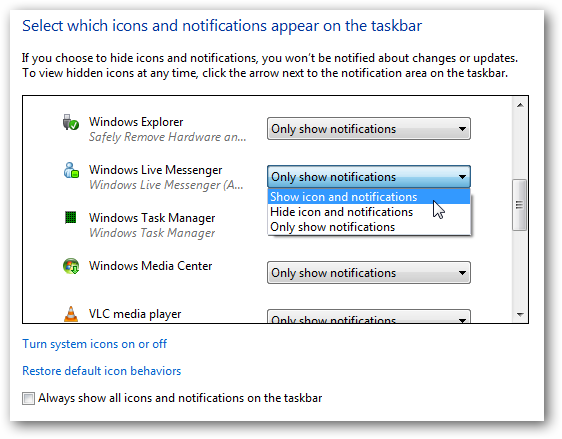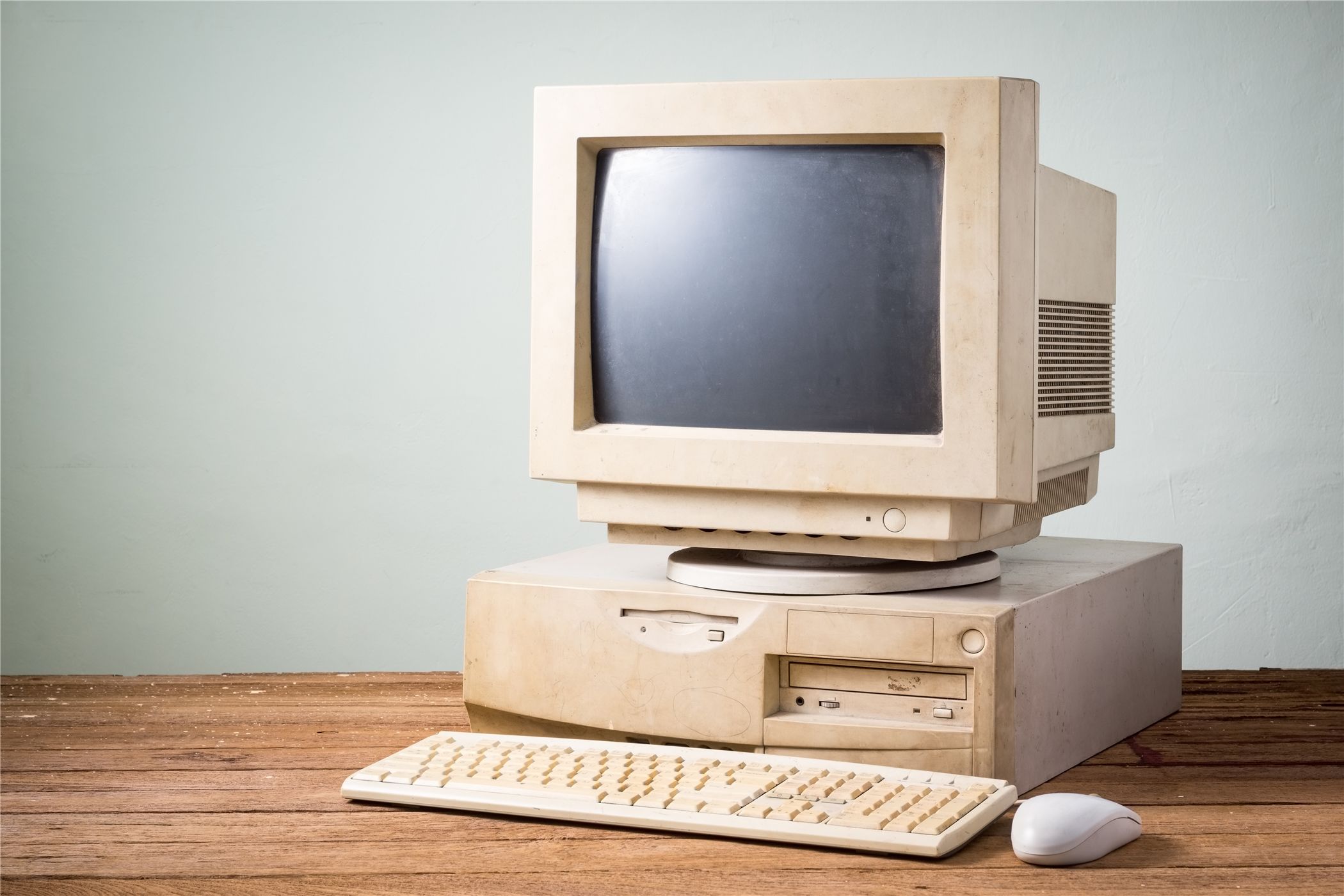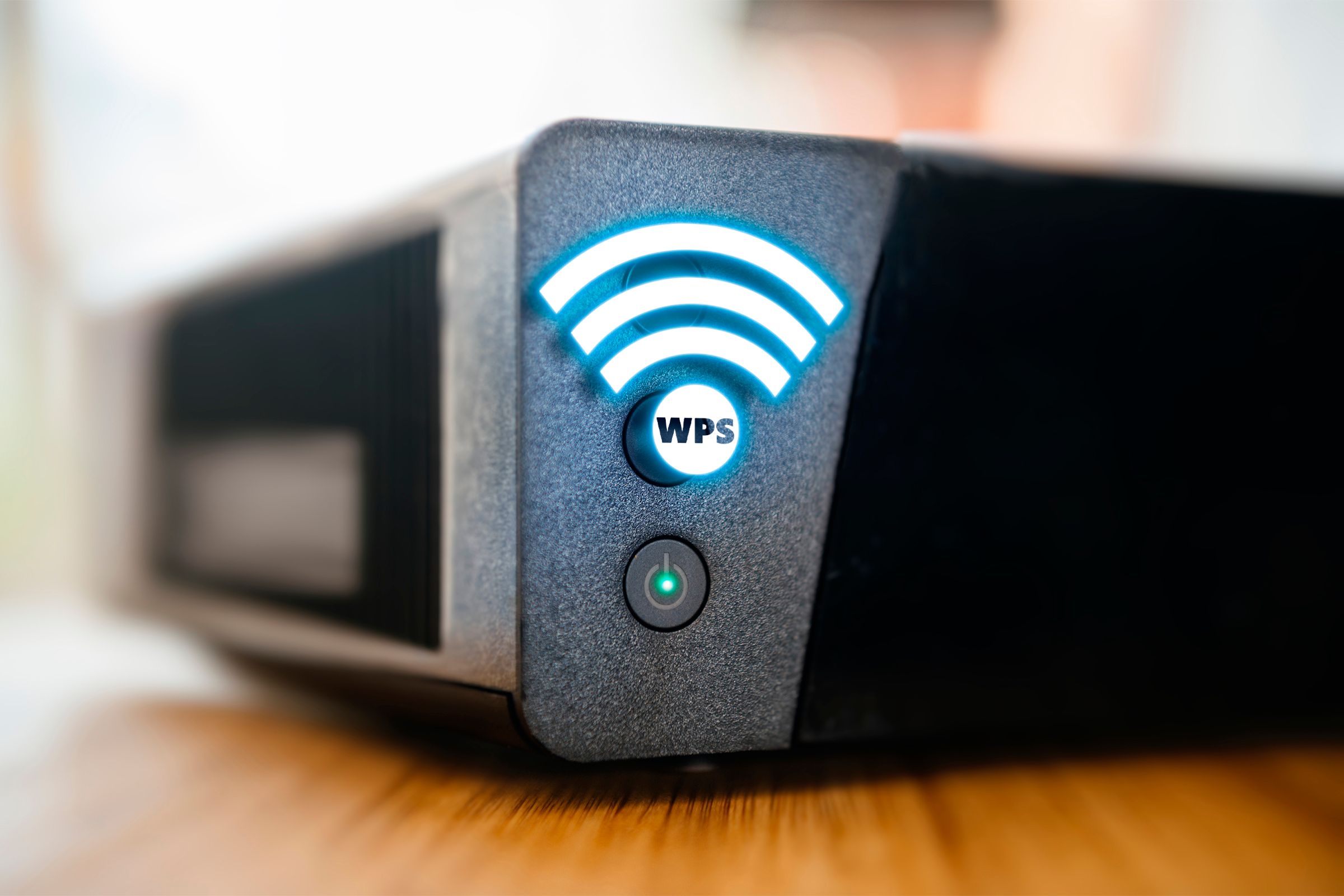7 Nostgalic Things About Dial-Up Internet We Don\'t Really Miss
Everyone knows "the old guy" who can't stop talking about the old days of the Internet when things were simpler. In some of my friend groups, I'm the old guy. I remember when internet speeds were crawling and when we had to sacrifice a demon to get access to the World Wide Web. Yet, there are some things I miss about the days of dial-up internet. If you're as old as I am, and you were there when the "magic" happened, you'd recognize some of these nostalgic memories.
The Distinctive Sound Of The Dial-Up Modem Connecting To The Internet
When I say "sacrifice a demon," you shouldn't take it literally, but that's how it sounded when connecting to the internet in the olden days. The dial-up process had a few sound cues you could use to figure out where in the process you were (if your modem had a speaker, anyway). Here's how it went:
- You'd get a dial tone and dial to your ISP. Each ISP had its own number, and you could hear the modem dialing.
- There would be a short cyclical noise—the aforementioned demon!
- There would be a short run of "static" as data flowed back and forth between you and the ISP access point.
- You'd get connected (or disconnected if the password wasn't valid).
Any millennial who lived during the dial-up years will tell you how distinctive that sound is, and it's something we'll never forget as long as we live
Googling Things and Figuring Out How They Were Done

One of the things I find most useful in this day and age is how quickly we can get a video of whatever we want to do and follow along with it. It wasn't always that easy, however. When dial-up was the connection speed, a video that could give you detailed information was just not easily available.
Sure, we had sites like YouTube, but back then, it didn't have such a widespread appeal. Plus, we had no phones to handily carry around. We'd have to load the video on a desktop and refer back to it when we needed it, which was very inconvenient. Granted, some people were already using broadband connections at that point, so a YouTube video didn't take nearly as long to load. In my case, I was still on dial-up, so YouTube videos were a non-starter for me. I certainly didn't want to spend half an hour waiting for a five-minute video to load.
Google wasn't yet as popular a search engine, but it got you the best results when you used it. Anything you wanted to know was at your fingertips. I remember moving my old Windows XP PC over to RedHat and having to figure out how to get the modem working since Linux didn't have the same level of support back then. Thanks to Google and a message board, I got a fully written driver that worked about 80% of the time. The driver was also tiny (a couple of kilobytes), which meant I could transfer it over my slow dial-up connection.
Forums And IM Were Social Media

Today, websites like Instagram and Facebook are how people who share an interest meet each other online. In the days of dial-up internet, however, sites like these were way too content-rich to load onto our browsers. Images and videos took longer to load because of the bottleneck of the dial-up speed. A "good" connection meant you could get as much as 10-12 kb/s download speed. Most of the infrastructure wasn't designed to run the internet, though, so you'd end up actually getting 2-6kbps download speeds.
So, with such slow download speeds and no chance of streaming video or using social media, how could we interact with others? Text was still a thing we used extensively, and we'd use Instant Messenger (IM) clients like MSN and ICQ to connect to friends (and sometimes strangers) to chat for hours on end. Some long-lasting friendships were forged in the fire of dial-up internet connections.
For those of us who were into specialized hobbies, like anime (which was fringe) and gaming (also fringe), forums were the places we could go to talk about hobbies with like-minded people. These forums had moderators who were real people (not bots), and if you misbehaved, they'd ban your IP, which kept you off the site permanently (in theory). Some popular forum threads had thousands of replies, and if you ever managed to make one of them, you never forgot it.
Patience is a Virtue

When your connection speed was slow, and you could only run one browser window at a time without it freezing (tabs weren't yet a thing in browsers), you had to have patience. Websites tried their best to reduce image quality so they would load faster, but even so, some websites would take minutes to load. The more elements the website had, the slower it would load. This was one of the reasons Google took over as the leading search engine.
All the other search engines, like Yahoo, Altavista, or AskJeeves, had a ton of other stuff on their home pages to load. If you look at the Yahoo site today, it's somewhat similar to the original website back in the dial-up days. Google was just a single search bar and nothing else, meaning that it loaded at blazing speed. I even used it as a way of checking if my internet was stable. If Google didn't load, the connection was either unstable or disconnected.
No Calls, Please
Dial-up used phone lines, but the catch was that back then, no one had a mobile phone, so all communication was done through phone lines. If you had to download a huge file, you wanted to remain connected for as long as possible, so the file transfer could be completed. That was almost certain to fail in a family that had a single working phone line.
Some families who could afford it took out a second line, but most people relied on the primary line for their connections. When Grandma or an aunt called with updates, the ring would boot you offline, and you'd have to wait until the discussion was done before you started trying to reconnect. So, what happens to those downloads if you get disconnected? Well, you lost all the progress on them, but that spawned a revolution in downloading designed for the dial-up age.
The Rise of the Download Manager
Download managers were a class of software that split up your downloads into multiple "threads" and allowed the resuming of broken downloads. For the dial-up age, it was a godsend because disconnections didn't waste your download time. There was a catch, though. Some of these download managers came bundled with search bars or malware that would set up shop on your computer and slow it down. Knowing which download manager you could trust was an exercise in awareness.
Multiplayer Gaming With Dial-Up Ping Spikes

I mentioned gaming before, but multiplayer gaming was a pretty new experience for those of us with dial-up. There weren't massively multiplayer games, but you could challenge up to eight friends to play over the internet in some cases. If your connection was solid, you wouldn't feel like it was so different from playing the real game. However, if your connection was terrible, you'd know.
"Lag spikes" happen when the information your computer sends to the server or your friend's computer is delayed. This leads to weird behaviors, such as people disappearing and reappearing on maps or seemingly standing still and doing nothing for some time. Most of us chose to play multiplayer late into the night because it was less likely that someone would call on the phone and boot us offline in the middle of a game.
The World Is Hugely Different Now

Some of these things might seem annoying to people who haven't lived it, but they're things I miss about dial-up internet. Granted, a lot of this is just nostalgia. I would be the first person to admit that I prefer the high-speed internet of today to yesteryear's dial-up. Still, there's a special place in my heart for the many nights I spent playing Starcraft with buddies at 1AM on a Saturday through my faithful dial-up modem. It's different when you do it by choice today instead of doing it because you don't want grandma booting you offline because she calls your mom on the home phone.
-
 3 Fixes for Gmail Login Failed in Mail App on MacBasic Fixes Check your internet speed: Try connecting to a 5GHz frequency band if you have a dual-band router. Verify your email and password: If you...Software tutorial Published on 2024-11-07
3 Fixes for Gmail Login Failed in Mail App on MacBasic Fixes Check your internet speed: Try connecting to a 5GHz frequency band if you have a dual-band router. Verify your email and password: If you...Software tutorial Published on 2024-11-07 -
 3 Fixes for the Translate App Not Working on iPhoneBasic Fixes Enable or disable On-Device mode: Open Settings > Translate > Disable On-Device Mode. Check your internet connection: The Translate app ne...Software tutorial Published on 2024-11-07
3 Fixes for the Translate App Not Working on iPhoneBasic Fixes Enable or disable On-Device mode: Open Settings > Translate > Disable On-Device Mode. Check your internet connection: The Translate app ne...Software tutorial Published on 2024-11-07 -
 What Is the Cycle Count (Battery) on Mac and How to Check ItWhat Is the Cycle Count on My MacBook A Cycle Count on your Mac is when you use 100% of its battery’s power, regardless of the number of times you cha...Software tutorial Published on 2024-11-07
What Is the Cycle Count (Battery) on Mac and How to Check ItWhat Is the Cycle Count on My MacBook A Cycle Count on your Mac is when you use 100% of its battery’s power, regardless of the number of times you cha...Software tutorial Published on 2024-11-07 -
 Fixing Steam Error No Download Source? All You Need to KnowAccording to the Steam error No download source you report, we explore and get several effective solutions which will be shared with you in this compr...Software tutorial Published on 2024-11-07
Fixing Steam Error No Download Source? All You Need to KnowAccording to the Steam error No download source you report, we explore and get several effective solutions which will be shared with you in this compr...Software tutorial Published on 2024-11-07 -
 10 Habits to Keep Resource Usage Low on a Windows PCA decade ago, a low-end Windows computer was my daily driver. It had just 4GB of RAM, a low-end processor, and no dedicated graphics card. Despite th...Software tutorial Published on 2024-11-07
10 Habits to Keep Resource Usage Low on a Windows PCA decade ago, a low-end Windows computer was my daily driver. It had just 4GB of RAM, a low-end processor, and no dedicated graphics card. Despite th...Software tutorial Published on 2024-11-07 -
 5 Ways to Retrieve Deleted Text Messages on AndroidMethod 1: Check the Archive and Spam Folder It’s easy to archive a text message on the Google Messages app accidentally. If that’s what you’ve done in...Software tutorial Published on 2024-11-07
5 Ways to Retrieve Deleted Text Messages on AndroidMethod 1: Check the Archive and Spam Folder It’s easy to archive a text message on the Google Messages app accidentally. If that’s what you’ve done in...Software tutorial Published on 2024-11-07 -
 Here\'s How I Properly Back Up My Windows 11 PCAlthough Windows Backup is a decent backup solution for Windows 11, it has its limitations. That's why I rely on a three-step process to properly ...Software tutorial Published on 2024-11-07
Here\'s How I Properly Back Up My Windows 11 PCAlthough Windows Backup is a decent backup solution for Windows 11, it has its limitations. That's why I rely on a three-step process to properly ...Software tutorial Published on 2024-11-07 -
 How to Transfer Text Messages (SMS) From Android to AndroidBoasting an easy-to-use interface, Android devices are the choice of more than half of smartphone users worldwide. When setting up a new device or res...Software tutorial Published on 2024-11-07
How to Transfer Text Messages (SMS) From Android to AndroidBoasting an easy-to-use interface, Android devices are the choice of more than half of smartphone users worldwide. When setting up a new device or res...Software tutorial Published on 2024-11-07 -
 An Administrator Has Restricted Sign in? Fix It Now!Why do you receive an administrator has restricted sign in after entering the correct information? How to unlock your system again? If you are looking...Software tutorial Published on 2024-11-07
An Administrator Has Restricted Sign in? Fix It Now!Why do you receive an administrator has restricted sign in after entering the correct information? How to unlock your system again? If you are looking...Software tutorial Published on 2024-11-07 -
 How to Stop Getting Calls From Blocked NumbersMethod 1: Review the Blocked Numbers List Before you delve deeper, double-checking the list of blocked numbers on your phone should fix calls from blo...Software tutorial Published on 2024-11-07
How to Stop Getting Calls From Blocked NumbersMethod 1: Review the Blocked Numbers List Before you delve deeper, double-checking the list of blocked numbers on your phone should fix calls from blo...Software tutorial Published on 2024-11-07 -
 3 Ways to Fix Vertical or Horizontal Lines on Android ScreenBasic Fixes Restart your device: Restart your device to remove any bugs or glitches causing the problem. Let your device cool down: Unplug your devic...Software tutorial Published on 2024-11-07
3 Ways to Fix Vertical or Horizontal Lines on Android ScreenBasic Fixes Restart your device: Restart your device to remove any bugs or glitches causing the problem. Let your device cool down: Unplug your devic...Software tutorial Published on 2024-11-07 -
 3 Ways to Make a Picture Fit Wallpaper on iPhoneMethod 1: By Using the Wallpaper Resizer App You can use third-party wallpaper resizing apps to do the job. Here’s how. Step 1: Download and open the ...Software tutorial Published on 2024-11-07
3 Ways to Make a Picture Fit Wallpaper on iPhoneMethod 1: By Using the Wallpaper Resizer App You can use third-party wallpaper resizing apps to do the job. Here’s how. Step 1: Download and open the ...Software tutorial Published on 2024-11-07 -
 WiFi Keeps Disconnecting on Windows 11 – 5 Quick FixesExpand the Network adapters category, right-click on your WiFi adapter, and choose Update driver. Select Search automatically for drivers. For a more...Software tutorial Published on 2024-11-07
WiFi Keeps Disconnecting on Windows 11 – 5 Quick FixesExpand the Network adapters category, right-click on your WiFi adapter, and choose Update driver. Select Search automatically for drivers. For a more...Software tutorial Published on 2024-11-07 -
 3 Fixes for Right Click Not Working on Windows 11Basic Fixes: Unplug peripheral devices: This will work because it isolates possible software interference and hardware conflicts that may trigger the ...Software tutorial Published on 2024-11-07
3 Fixes for Right Click Not Working on Windows 11Basic Fixes: Unplug peripheral devices: This will work because it isolates possible software interference and hardware conflicts that may trigger the ...Software tutorial Published on 2024-11-07 -
 How to Can You Fix Satisfactory Executable Missing Error?It could be exciting news for players who have waiting for Satisfactory for a long time that Satisfactory is available on Steam now. However, plenty o...Software tutorial Published on 2024-11-07
How to Can You Fix Satisfactory Executable Missing Error?It could be exciting news for players who have waiting for Satisfactory for a long time that Satisfactory is available on Steam now. However, plenty o...Software tutorial Published on 2024-11-07
Study Chinese
- 1 How do you say "walk" in Chinese? 走路 Chinese pronunciation, 走路 Chinese learning
- 2 How do you say "take a plane" in Chinese? 坐飞机 Chinese pronunciation, 坐飞机 Chinese learning
- 3 How do you say "take a train" in Chinese? 坐火车 Chinese pronunciation, 坐火车 Chinese learning
- 4 How do you say "take a bus" in Chinese? 坐车 Chinese pronunciation, 坐车 Chinese learning
- 5 How to say drive in Chinese? 开车 Chinese pronunciation, 开车 Chinese learning
- 6 How do you say swimming in Chinese? 游泳 Chinese pronunciation, 游泳 Chinese learning
- 7 How do you say ride a bicycle in Chinese? 骑自行车 Chinese pronunciation, 骑自行车 Chinese learning
- 8 How do you say hello in Chinese? 你好Chinese pronunciation, 你好Chinese learning
- 9 How do you say thank you in Chinese? 谢谢Chinese pronunciation, 谢谢Chinese learning
- 10 How to say goodbye in Chinese? 再见Chinese pronunciation, 再见Chinese learning

























